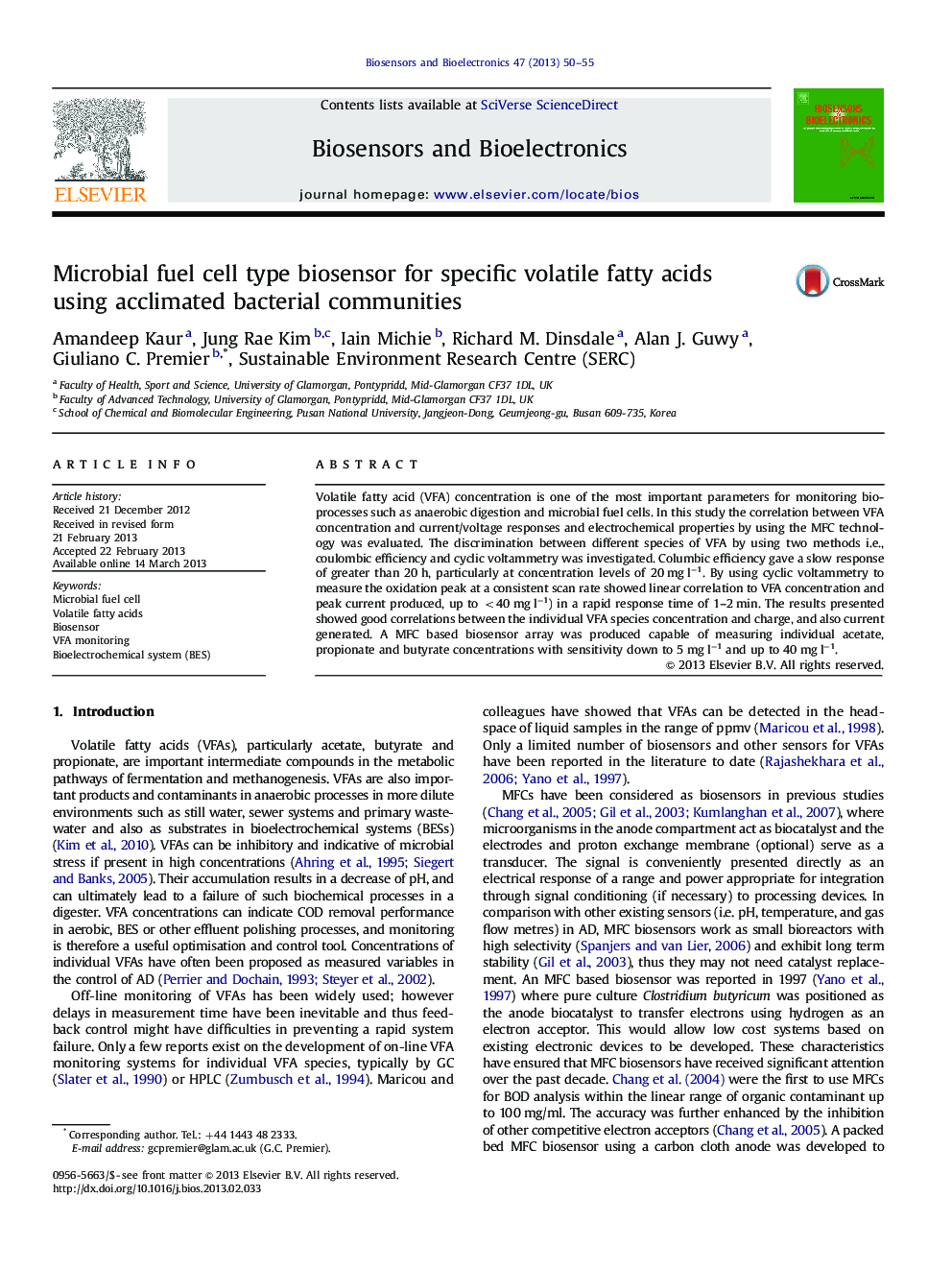| Article ID | Journal | Published Year | Pages | File Type |
|---|---|---|---|---|
| 866939 | Biosensors and Bioelectronics | 2013 | 6 Pages |
► We consider microbial fuel cells (MFCs) to quantify and speciate dissolved volatile fatty acids.► We discriminate between acetate, butyrate and propionate using specifically acclimated MFCs.► MFC propionate and butyrate degradations are enhanced compared to AD, enabling VFA discrimination.► We present archeal and bacterial community analyses of biofilms enriched with different VFAs.
Volatile fatty acid (VFA) concentration is one of the most important parameters for monitoring bio-processes such as anaerobic digestion and microbial fuel cells. In this study the correlation between VFA concentration and current/voltage responses and electrochemical properties by using the MFC technology was evaluated. The discrimination between different species of VFA by using two methods i.e., coulombic efficiency and cyclic voltammetry was investigated. Columbic efficiency gave a slow response of greater than 20 h, particularly at concentration levels of 20 mg l−1. By using cyclic voltammetry to measure the oxidation peak at a consistent scan rate showed linear correlation to VFA concentration and peak current produced, up to <40 mg l−1) in a rapid response time of 1–2 min. The results presented showed good correlations between the individual VFA species concentration and charge, and also current generated. A MFC based biosensor array was produced capable of measuring individual acetate, propionate and butyrate concentrations with sensitivity down to 5 mg l−1 and up to 40 mg l−1.
